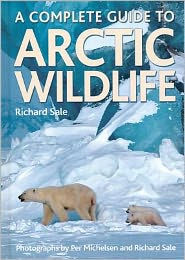The Arctic can appear empty. It can also appear an extremely harsh and unforgiving environment, demanding to all who venture there. It is both those things, but it can also be magical.
This book is a celebration of the Arctic. It deals primarily with its wildlife, but a discussion of birds and mammals cannot restrict itself solely to identification, diet and breeding biology; it must also consider the wider picture. It cannot ignore the geology, the geography and the climate that define the habitat in which those animals and birds live. It cannot ignore the threats currently faced by the region, such as climate change, and the probable outcome for the wildlife if those threats are ignored.
The book starts by defining the Arctic and by considering how animals and plants have evolved to cope with the tough Arctic environment. The adaptations of these creatures are discussed, as are the ways their evolution has been driven by the ebb and flow of polar ice. Next the book moves on to look at the human history of the area, followed by a discussion of the threats posed to the Arctic and its wildlife by human activity.
Following the extensive field guide to the bird and mammal species, there is a visitor's guide to the Arctic, which looks in brief at what each region has to offer the wildlife observer, and the ease of travel to it.
Richard Sale, June 2006



